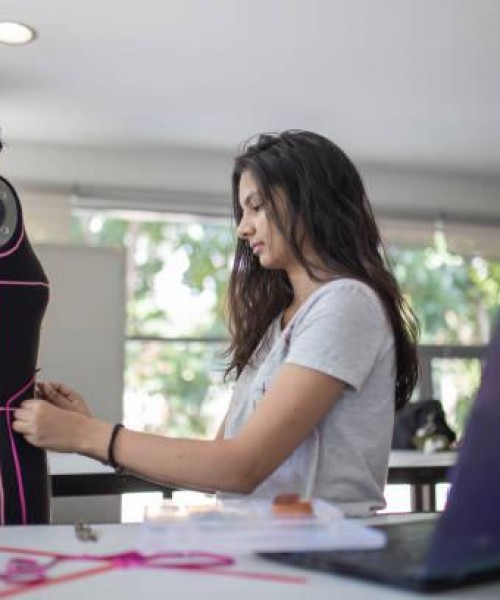英语专业论文 Design a simple apnea detection system
1.3 IMPEDANCE PNEUMOGRAPHY
Impedance pneumography is another practical method to monitor the breathing of the patient. The technique also enables the simultaneous monitoring of the heart rate and respiration. This has certain inherent disadvantages. One is that the placement of the electrodes is very critical and other is cardiovascular artifact. This results from the detection of movement between the electrodes because of the cardiovascular system, rather than due to respiration. Apnea monitors need to be designed to reject this artifact.
The principle of impedance pneumography is to pass a current through the chest between two electrodes, and from the resultant voltage to determine the changes in chest impedance which occur during respiration. It has been proposed that the impedance change occurring in respiration is directly proportional to the change in volume of air contained in the thorax, and therefore reflects tidal volume.
The technique works by applying a current of approximately 10 microamperes to 1milliamperes with a frequency of 30-100 kHz to the thorax. This frequency is high enough to avoid stimulation of tissues, electrode polarization and excessively high skin impedance. The electrodes are always maintained with negligible potential difference which makes it possible to measure the impedance of a central core of thoracic tissue.Thus these impedance changes are obtained as thoracic changes that gives details about respiration.Fig 1.7 shows the block diagram Of impedance pneumography technique.
1.4 LABVIEW AND ITS APPLICATIONS
LabVIEW
Laboratory Virtual Instrumentation Engineering Workbench.LabVIEW is a graphical programming environment used by millions of engineers and scientists to develop sophisticated measurement, test, and control systems using intuitive graphical icons and wires that resemble a flowchart.
Biomedical Application:
Multisim Simulation with anECGAmplifier
- Noninvasive Blood Pressure (NIBP) Analyzer
- Analog ECGGenerator
- Heart Rate Variability (HRV) Analyzer
- ECG Feature Extractor
- Online Biosignal Noise Reduction Data Logger
- Biosignal Logger
OBJECTIVES
- To collect the respiratory database
- To study the apnea characteristics
- To detect and classify apnea
- To achieve maximum accuracy
- To design a respiratory signal simulation system
CHAPTER 2
LITERATURE SURVEY
2.1 RESPIRATION DATA ACQUISITION, CONVERSION AND DISPLAY SYSTEM
2.1.1 Methodology
- Respiration data is acquired and converted into a series of pulses, the frequency of which is related to the respiration rate of the data measured .
- The output pulses switch a timing device "on" and “off ”, and the average time of a respiration cycle is then converted and displayed as respiration rate.
- The timing device includes a means for delaying a first output pulses before beginning the sampling period and registering a count of clock pulses for a specified number which represents the time period of a second specified number of the output pulses occurring subsequently to the first specified number of output pulses.
2.1.2 Conclusion
This invention relates to an acquisition unit for acquiring data relating to one or more physiological variables from a patient. Displaying the data digitally and, upon operator approval, recording the data in an internal memory. Further, the invention relates to a data storage system responsive to data stored in an acquisition unit for a display presentation.
2.2 METHOD AND APPARATUS FOR DETERMINING A RESPIRATIONPARAMETER IN A MEDICAL DEVICE
Shrivastav, Maneesh, Cho, Yong K., Bennett, Tommy D., Erickson, Mark K., Greenhut, Saul E., Kleckner, Karen J., Sperling, Charles P., Corey, Robert A.
2.2.1 Methodology
- A pressure sensor senses pressure signals, and a signal processor, coupled to the pressure sensor, receives the sensed pressure signaland generates corresponding sample points.
- A microprocessor continuously adjusts a breath detection threshold in response to the generated sample points to generate a current adjusted breath detection threshold.
- Then it compares a current generated sample point to the current adjusted breath detection threshold, suspends the continuous adjusting of the breath detection threshold.
- Then the microcontroller sets the breath detection threshold equal to the most current adjusted breath detection threshold generated prior to the suspending, and determines the respirationparameter in response to a comparing of a next generated sample point to the set breath detection threshold.
2.2.2 Conclusion
This invention relates to a method of acquisition of respiratory signal using pressure sensor and displays that respiration parameter using a microcontroller.
2.3 METHOD AND APPARATUS FOR MONITORING RESPIRATION
Rymut, Russell, Slotty, Eric, Kini, Narendra
2.3.1 Methodology
- The apparatus includes a piezoelectric film which converts acoustical waves generated by the patient's respiration activity into electrical signal output.
- The piezoelectric film sensor placed in the subject can be used to monitor the respiration of a patient by correlating the sound generated in the patient's airway with respiratory activity.
- Further, the data generated by the sensor may be further analyzed by a patient monitor to diagnose respiratory conditions and display it.
2.3.2 Conclusion
This invention relates to a method and apparatus for monitoring and quantitatively measuring the respiration of a patient , particularly, using a flexible piezoelectric film sensor.
2.4 APNEA MONITOR
Guixian Lu
2.4.1 Methodology
- 1. A conductive rubber string is used to measure the chest volume changes. It is not suitable for OSA. In that case a differential gas flow sensor is used.
- The output of the sensors is amplified and then fed to a re-shaper.
- 3.The re-shaper re-shapes the signal and generates pulses to trigger the counter.
- 4.The counter triggers the alarm circuit if the count exceeds a predetermined threshold.
2.4.2 Conclusion
For adults one rubber string is enough. But for infants, the frequency of the body movement is measured. So an additional rubber string with motion detector is needed. The gas flow sensor is reliable and sensitive. A buzzer is used to give alarm.
2.5 DESIGN AND IMPLEMENTATION OF A PROGRAMMABLE APNEA MONITORING SYSTEM
Mustafa Çavuşoğlu, Osman Eroğul , Ziya Telatar
2.5.1 Methodology
- Respiratory signal is perceived by a thermal sensor.
- The signal is amplified and then fed to the microcontroller.
- The output of microcontroller is transferred to the computer and the relation between ECG and the signal is evaluated.
- An alarm system is also provided to indicate apnea
2.5.2 Conclusion
The system is capable of detecting apnea, warns during the apnea and transfers the respiration signals to the computer. Finally,categorization of the apnea intervals is done to generate a real-time histogram of their frequency and duration which makes possible to investigate the relations between the EEG, ECG or other physiological signals and the respiratory patterns.









